Kitesurfing Dynamics: Performance and Community Insights
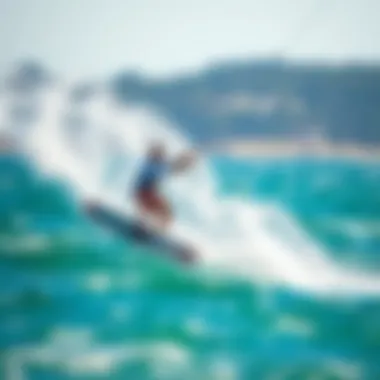
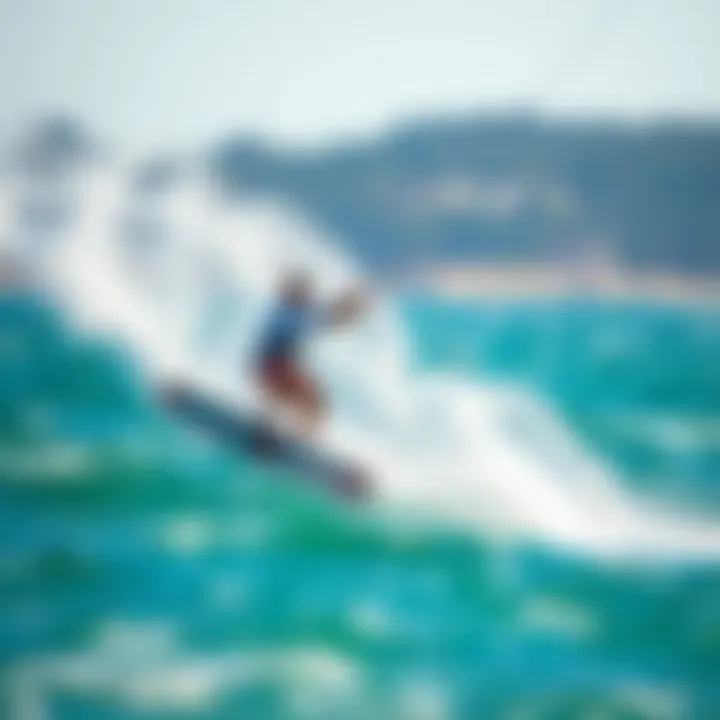
Intro
Kitesurfing is not just a sport; it’s an exhilarating art form that combines elements of surfing, sailing, and gymnastics. The rush of the wind against your face and the salt of the ocean in your lungs creates a sensation uniquely suited to thrill-seekers. Yet, there’s more to kitesurfing than meets the eye. In this article, we will break down the multi-faceted world of kitesurfing, focusing on the importance of the WOO system in monitoring rider performance while delving into essential aspects like gear and skill development.
Understanding the mechanics of kitesurfing is crucial for both newcomers and seasoned enthusiasts alike. What set-ups work best? How can one enhance their performance through data tracking? These are the questions we shall explore. From kit selection to safety practices and environmental considerations, you’ll get a comprehensive understanding of what it takes to ride the waves effectively.
Let’s plunge into the nitty-gritty, starting with an essential component of kitesurfing—the gear.
Gear Selection
When it comes to kitesurfing, having the right gear can make or break your experience on the water. Choosing not only the right kite but also the appropriate board ensures that your ride is both enjoyable and safe. Below are critical factors to consider when making your selection.
Types of Kites
There are several types of kites, each tailored for specific wind conditions and rider preferences:
- C-Kites: Recognized for their high performance, these kites offer excellent jumping capability. Ideal for experienced riders, they excel in freestyle conditions.
- Bow Kites: Known for their larger surface area, these kites provide good power and stability. They are great for beginners due to their ease of use and good lift.
- Delta Kites: Versatile and user-friendly, these kites work well across various wind ranges. Their shape allows for ease of control, making them suitable for different skill levels.
Choosing the right kite depends on your skill level, preferred riding style, and the typical wind conditions of your chosen spot.
Choosing the Right Board
Selecting the right board is just as pivotal as sifting through your kite options. Kitesurfing boards come in various shapes and sizes:
- Twin-Tip Boards: The most popular choice among kitesurfers, these boards are symmetrical, making them easy to ride in either direction. Perfect for tricks and jumping.
- Directional Boards: If you’re a wave rider, directional boards are your best bet. They’re designed for surfing, with a shape that allows for cleaner lines and powerful turns.
- Foil Boards: A more recent trend, foil boards lift above the water, offering a different riding experience altogether. It requires a bit of finesse, but the thrill of riding a foil can’t be beaten once mastered.
"The right gear is like a key; it unlocks potential you didn't know you had."
Stay tuned as we shift gears towards skill development, focusing on essential techniques to help you progress in kitesurfing.
Prelims to Kitesurfing
Kitesurfing blends the thrill of surfing with the power of kite flying, offering a unique experience on the water. Its appeal lies not just in the adrenaline rush but also in the sense of freedom it provides. A major aspect of kitesurfing is the connection between wind, water, and rider. Understanding this sport's core elements is essential for both beginners and seasoned enthusiasts, as it lays the groundwork for appreciating what's to follow in this article.
Kitesurfing's growing popularity can be attributed to its accessibility and the advances in equipment, making it easier for newcomers to join in on the fun. With the right mindset and gear, anyone can learn to harness the wind and ride the waves. But it's not all about the thrills; it also offers a chance for connection — with nature and with others who share the passion.
Historical Context
The roots of kitesurfing stretch back to ancient civilizations, where kites were used primarily for military purposes or scientific observations. Fast forward to the late 20th century, and we begin to see a significant evolution in the use of kites for recreation.
In the 1980s, pioneers like Peter Lynn started experimenting with kites in water sports, leading to the creation of the first kitesurfing prototypes. By the 1990s, the sport began to gain traction, with brands like CrazyFly and Naish introducing commercial products that made kitesurfing more accessible. The arrival of the inflatable kite in the early 2000s was a game changer, improving safety and performance for riders. Now, kitesurfing is a staple in many coastal regions and hosts international competitions, drawing in a diverse crowd from all walks of life.
Evolving Techniques
As kitesurfing has matured, so have the techniques employed by riders. Initially, the sport was all about getting up and riding; now it encompasses a variety of styles and maneuvers. Riders have adopted various approaches — from freestyle, focused on tricks and jumps, to wave riding, which emphasizes riding the crest and harnessing the energy of the ocean.
With the integration of technology, such as the WOO system, tracking performance and progression has become easier than ever. Riders can fine-tune their technique with data insights that were once impossible to obtain. This allows for more personalized training and helps to push the boundaries of what can be achieved on the water.
In summation, understanding the history and evolving techniques involved in kitesurfing is not just an academic exercise; it's a crucial part of embracing this exhilarating sport. As we dig deeper into specifics in the following sections of this article, readers will find that the more they know, the more they can appreciate the artistry and the intricate dance between rider and nature.
Understanding the WOO System
In the realm of kitesurfing, performance is not merely about wind conditions or the size of the kite; it's about the meticulous tracking and analysis of one's skills. This is where the WOO system shines, offering a window into the intricacies of rider performance. Understanding how WOO functions can truly enhance a kitesurfer's experience, making it one of the pivotal elements discussed in this article. WOO uses detailed data to help riders push their limits, fostering a community of informed and evolving enthusiasts.
What is WOO?
WOO, short for "WOO Sports," is a cutting-edge device designed explicitly for kitesurfers. This small, strap-on piece of tech keeps tabs on various parameters such as height of jumps, relative speed, and airtime. Riders can attach the WOO device to their kites or harnesses, allowing the sensor to record their every move on the water. When uploaded to the accompanying app, this data paints a vivid picture of their performance. The first time you see such detailed statistics, it’s like opening a treasure chest filled with insights.
Data Tracking in Kitesurfing
Data tracking through the WOO system not only captures countless airborne maneuvers but also provides feedback on performance refinement. By examining specific metrics, riders can understand where they excel and where they struggle. The insights gathered can be transformative. For instance,
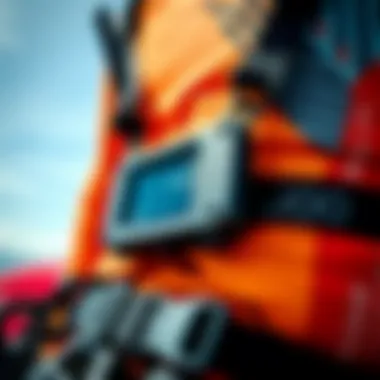
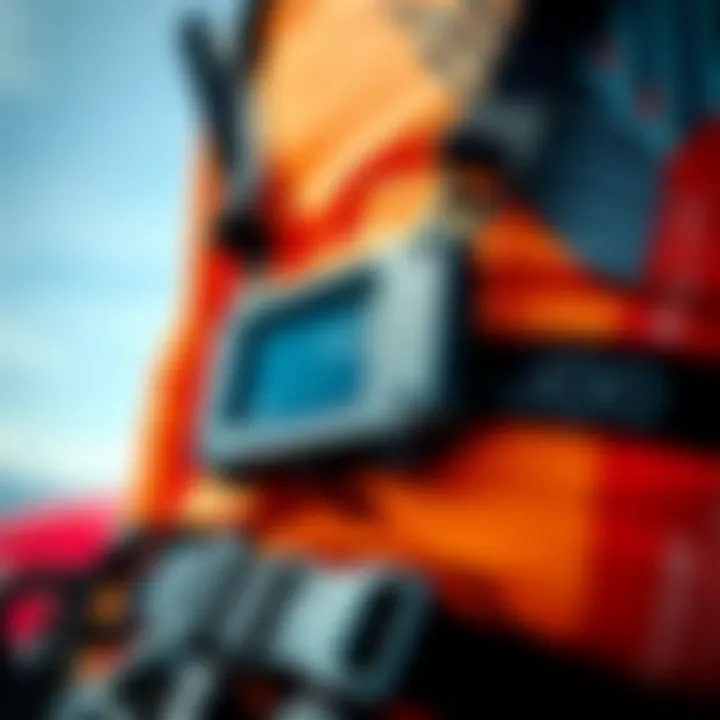
- Jump Height: Helps measure improvements in thrill-seeking techniques.
- Airtime: Shows how well riders maintain air control.
- Speed: Indicates the efficiency and technique execution while performing advanced tricks.
This tracking also allows participants to set personalized goals, whether it’s making a bigger jump or landing a new trick. Constantly feeding back the data keeps riders motivated to achieve more.
Impact on Rider Performance
The implications of adopting the WOO system are profound. By continuously analyzing performance data, riders can pinpoint advancement areas and avoid bad habits. For example, you may find that you struggle with timing your landings, or maybe your jumps aren’t quite reaching the heights you expect. With this information in hand, you can then focus on those specific aspects in your practice sessions.
Furthermore, sharing statistics with fellow riders taps into a communal spirit that elevates everyone’s skills. It’s not just about personal bests; it’s about celebrating each other's achievements.
Measuring performance thus becomes a journey—one enriched by friendly competition, camaraderie, and motivation. Here’s a quick snapshot of benefits to rider performance:
- Enhanced focus on technique improvements.
- The ability to track progress over time.
- Encouragement to set and surpass personal goals.
Finally, the WOO system underscores a more extensive trend in sports technology—the merging of objective data with subjective experience. It’s not just about riding waves; it’s about crafting oneself into a savvy, skilled kitesurfer with each session, thus cementing WOO as an essential component of modern kitesurfing.
Essential Equipment Overview
In the world of kitesurfing, having the right equipment is not just a matter of convenience; it’s essential for performance, safety, and overall enjoyment of the sport. Whether you're just starting out or you're an experienced rider, understanding the nuances of each component can make a remarkable difference in your kitesurfing experience. The kites, boards, harnesses, and safety gear all play critical roles and deserve careful consideration.
Kites
Kites are arguably the heart of kitesurfing, serving as the primary source of propulsion. They come in various shapes and sizes, designed for different wind conditions and rider preferences. It’s vital to choose the right kite to match your skill level and the environment you’re working with.
- Types of Kites: There are mainly two categories; inflatable kites, which provide better stability and are more beginner-friendly, and foil kites, known for their efficiency in lighter winds. Understanding the fundamental differences can enhance your performance.
- Size Matters: Kite size substantially affects how a rider can perform. A larger kite will pull you faster but can also be more challenging to control, especially for novices.
- Material Considerations: The material of kites contributes to their resilience and durability. Newcomers should look for kites that can withstand some abuse as they learn to maneuver.
Choosing a kite isn’t merely about brand preference; it’s about matching the equipment to the conditions and to one’s own skill set. A kite that works wonders for an expert may present a challenge for a novice.
Boards
The board you choose directly affects your ride, including your speed, control, and comfort. Kitesurfing boards come in various styles, each designed to suit particular riding styles and conditions.
- Types of Boards: There are twin tip boards, which are great for general use, and directional boards, that are suitable for riding downwind and making surfing-style maneuvers.
- Material and Construction: The material can influence a board's weight and responsiveness. Lightweight constructions enhance maneuverability, while sturdier options like wood can best withstand rough water.
- Sizing: Board size is based on rider weight and skill level. Larger boards float better, whereas smaller boards allow for tricks and more dynamic movement.
Picking the right board means balancing personal preference with performance dynamics, and everybody has is different.
Harnesses
A good harness is crucial in kitesurfing because it directly affects how the kite’s power is transferred to the rider. The comfort and support provided by a harness also plays into one’s ability to enjoy longer sessions on the water.
- Types of Harnesses: Most commonly, you will encounter seat harnesses and waist harnesses. Seat harnesses distribute pressure around the hips, making them suitable for beginners or those who prefer more support. Waist harnesses offer more mobility, favored by seasoned riders.
- Fit is Key: A harness that fits properly ensures you won’t be distracted by constant adjustments or discomfort. Pay attention to the sizing charts and test before buying if possible.
Your choice of harness should be based on your riding style and comfort; nothing entices a rider more than a perfect fit.
Safety Gear
Safety should be a priority when kitesurfing, as the sport involves strong winds, moving equipment, and water hazards. Having the right safety gear can not only prevent injuries but also boost your confidence while riding.
- Impact Vests: Wearing an impact vest can protect you from sudden falls, which are common in kitesurfing. Some vests come with floatation assistance, adding another layer of safety.
- Helmets: A helmet may not always be at the forefront of a kitesurfer's mind, but it can protect against head injuries during crashes.
- Leash Systems: A quick-release leash can help maintain control of your kite during an emergency, making it easier to detach without needing to swim back to shore.
Don’t skimp on safety gear; what might seem like an extra can prove life-saving when you're out there battling the elements.
"The right gear not only enhances performance but reinforces safety; a win-win in any extreme sport.”
In the end, the combination of well-selected gear tailored to individual needs and conditions fosters not just better performance but a richer kitesurfing experience.
Mastering the Waves
Kitesurfing is not just a thrilling water sport; it’s a dance with nature. To master the waves is to understand the intricate balance between wind, water, and the rider's body. This section focuses on the techniques and maneuvers crucial for success in kitesurfing. Mastering the waves does not merely improve one’s performance; it also enhances safety, ensures optimum enjoyment, and brings a sense of accomplishment to riders.
Techniques for Beginners
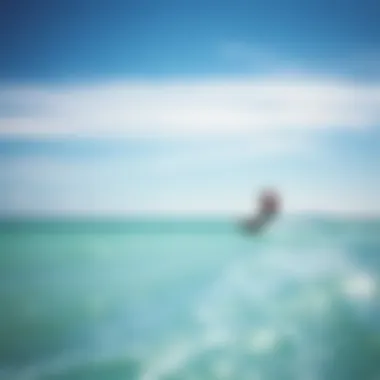
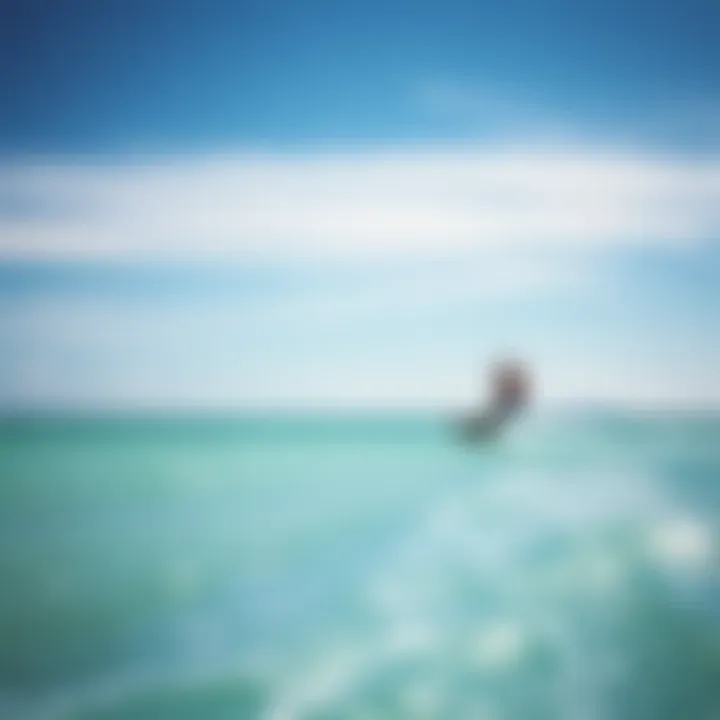
For those dipping their toes into kitesurfing, mastering the basics is vital. Beginners must first familiarize themselves with the nuances of the wind and the kite. This foundational knowledge lays the groundwork for building confidence on the water.
- Body Position: Beginners should focus on maintaining a proper stance. Distributing weight evenly on the board helps maintain balance and control, especially when the waves get choppy.
- Harness Utilization: Understanding how to use the harness effectively is key. It should feel snug but not restrictive, allowing the rider to pull and steer without using excessive upper body strength.
- Kite Control: Practicing kite control on land before hitting the water can be invaluable. Beginners can learn to steer the kite using small movements and get accustomed to its pull when it catches the wind.
Pro Tip: Start in shallow waters where you can stand up easily; this reduces the fear of falling and helps you learn quickly.
Once comfort with these initial techniques is achieved, riders can start to ride with the wind, practice edging the board, and gradually increase speed.
Advanced Maneuvers
As skills develop and confidence builds, riders begin exploring advanced maneuvers that define a more seasoned kitesurfer. These maneuvers not only elevate performance but also open the door to an exciting realm of creativity on the waves.
- Jumping: This involves using the wind and waves to leap off the surface, presenting an exhilarating experience that also boosts rider visibility. Riders must time their edge and kite position perfectly to achieve lift and a smooth landing.
- Tricks: From spins to flips, mastering tricks requires precise control and timing. Beginners trying to execute these should first break each trick down into manageable parts, practicing each element separately before combining them.
- Riding Switch: This maneuver involves shifting foot positions and riding with the opposite foot forward. It challenges balance and board control but enhances versatility.
With commitment and practice, mastering these techniques can transform one’s kitesurfing experience, making it not just about gliding over water but about expressing oneself amid the elements.
Safety Protocols in Kitesurfing
Kitesurfing is an adrenaline-packed sport that offers exhilarating experiences, but it’s not without its risks. Understanding safety protocols in kitesurfing is paramount for ensuring not just personal well-being but also the safety of others around you. The essence of enjoying kitesurfing lies in balancing the thrill with responsibility. When kiteboarders adhere to proper safety measures, they enhance their performance while minimizing the likelihood of accidents or mishaps.
Pre-Flight Checks
Before even setting foot on the water, conducting thorough pre-flight checks cannot be overstated. These checks act as a fundamental layer of precaution. Here’s a checklist to guide your pre-flight routine:
- Inspect the Gear: Examine the kite, lines, and harness for any wear and tear. A small tear or fray can lead to catastrophic failures. Ensure everything is in peak condition.
- Know Your Environment: Understand the weather conditions and water conditions of your location. Wind speed, direction, and potential obstacles should be assessed.
- Test the Equipment: Inflate the kite and check all lines for tangles. Clear lines are essential for optimal handling. You'd be surprised how quickly things can get tangled.
- Safety Attachments: Ensure safety systems, like quick releases and leash systems, are functioning properly. A malfunction here could lead to dire situations in emergencies.
- Discuss with Your Crew: Ensure that anyone else in the water knows your plans and what to do in case something goes wrong. Clear communication can save lives.
By adhering to these checks, riders can markedly reduce their chances of running into trouble once in the water, allowing for more focus on the sport itself rather than on potential hazards.
On-the-Water Considerations
Once out on the water, the considerations shift toward situational awareness. Beyond the fun of zipping across the waves, the kitesurfer's ability to stay vigilant and proactive in changing situations is crucial. Consider the following:
- Maintain Distance: Always keep a safe distance from other kitesurfers and watercrafts. This helps prevent collisions, which can cause serious injuries to riders and equipment alike.
- Watch for Changes: Weather can change faster than one might expect. Be alert to shifts in wind and sudden changes in sea conditions. It's also wise to familiarize yourself with local tide patterns and how they might affect your riding conditions.
- Buddy System: Whenever possible, kite with a partner. Not only does it enhance safety, but it also provides an additional pair of eyes to look out for potential dangers, increasing the enjoyment of the sport.
- Know When to Land: Recognize your limits and the signals that it’s time to call it a day. If wind conditions exceed your ability, or if you feel exhausted, it’s best to safely land your kite and pack up.
- Emergency Protocols: Familiarize yourself with emergency procedures, whether that means knowing how to perform self-rescue or having a plan for getting help if needed.
"Safety is not something you can take lightly; it’s an essential part of enjoying kitesurfing responsibly."
Following these guidelines may seem tedious, but they can make all the difference between a fun day on the water and a regrettable incident. Understanding and implementing these safety protocols is not just about compliance; it’s about fostering a culture of safety that encourages long-term participation and enjoyment in the sport. For further reading on safety measures, check resources at Kitesurfing Safety Council or consult community groups on Reddit like r/kitesurfing.
Kitesurfing Destinations
Kitesurfing isn’t just a sport; it's a way to experience some of the most breathtaking locations around the globe. Choosing the right spot for kitesurfing plays a crucial role in the joy and success a kiteboarder will experience. Weather conditions, wind patterns, and water characteristics can make or break a session. Additionally, the beauty and environment of a destination enhances the overall experience, making it one to remember. With this in mind, understanding the best kitesurfing destinations can significantly elevate your adventures on the water.
Top Locations Worldwide
When it comes to kitesurfing, some locations just outshine the rest. They offer ideal conditions like consistent winds and vast stretches of flat water or exciting waves. This section will explore top kitesurfing locations that cater to both novices and seasoned professionals alike:
- Seychelles: Known for its stunning lagoons and crystal-clear water, this destination offers wind conditions that are perfect for the kitesurfer looking to harness both their technique and enjoyment of the sport.
- Tarifa, Spain: Often referred to as the kitesurfing capital of Europe, Tarifa boasts strong thermal winds and a vibrant atmosphere. Ideal for riders of all experience levels, it's a hot spot for competitions and gatherings.
- Hood River, Oregon: Nestled between mountains, the Columbia River Gorge provides a unique landscape for kitesurfing. Gusty winds and beautiful scenery create a kitesurfing mecca, loved by many.
- Cape Town, South Africa: With its iconic Table Mountain behind it, this destination not only presents stunning backdrops but also robust winds, making it a diverse venue for varied kitesurfing maneuvers.
- Langebaan, South Africa: Another South African gem, known for its user-friendly flat water conditions. For beginners, Langebaan can be a safe haven to practice and improve skills.
These locations not only offer practical advantages, but they also foster a vibrant community of kiteboarding enthusiasts. The interplay of culture and sport makes these destinations stand out.
Hidden Gems
While big-name spots carry their charm, countless lesser-known locations present exceptional kitesurfing experiences without the crowds or commercialization. Here are some hidden gems worth a visit:
- Isla de Cayo, Cuba: This untouched paradise boasts strong winds and stunning scenery, offering an authentic connection to nature and a way to experience the true essence of kitesurfing.
- Dahab, Egypt: Not just another ordinary destination, Dahab offers unique wind conditions and a laid-back vibe. The beauty of the Red Sea paired with local hospitality creates an unforgettable atmosphere.
- The Philippines: Known for its thousands of islands, you can find tucked-away spots like Boracay that offer pristine waters and lively winds. It's not just about kitesurfing; it's about diving into a tropical dream.
- Nicaragua: A rising star in kitesurfing circles; its consistent winds, warm waters, and rich culture make Nicaragua a destination to keep on the radar. Beaches like San Juan del Sur have begun to catch on with kiteboarders.
Exploring these hidden gems can be a game-changer for kiteboarders seeking quieter waters and new experiences. You’d be amazed at the vibrancy and beauty that less-traveled spots can offer.
“Sometimes, the road less traveled leads to the greatest adventures.”
Each kitesurfing destination holds its own charm and opportunities, enriching the kitesurfing experience while also contributing to a strong sense of community among kiteboarders.
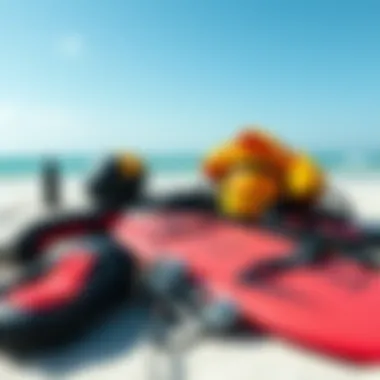
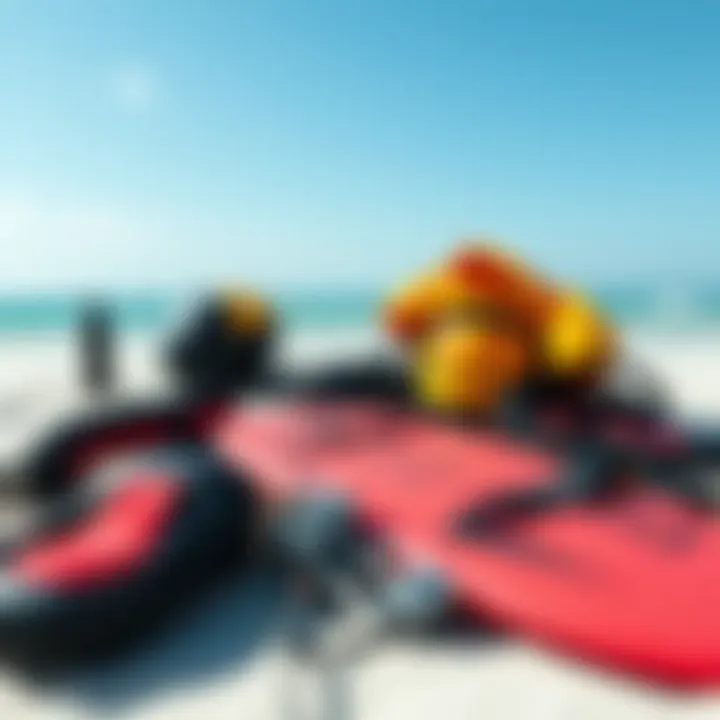
Environmental Considerations
Kitesurfing operates within an ecosystem that spans land and water. As enthusiasts, instructors, and organizers, it's crucial to be aware of how our actions impact the places we love. The waterways and beaches, though seemingly resilient, are delicate habitats that require our vigilance and care. In this section, we will look into sustainable practices we can adopt to minimize our footprint and the broader impact on marine life.
Sustainable Practices
Practicing sustainability in kitesurfing isn’t just a trend, it’s a responsibility. Simple yet effective actions can lead to significant changes. Here are some practices that are not only easy to adopt but also crucial in conserving the environment:
- Leave No Trace: After a day on the water, ensure that all gear and trash are collected. Plastics and wrappers can easily find their way into the ocean, posing a threat to marine ecosystems.
- Select Eco-Friendly Gear: Many brands are now producing kites and boards using sustainable materials. Look for products that prioritize eco-consciousness in their manufacturing processes.
- Educate and Advocate: Engaging other kitesurfers in discussions about environmental practices can amplify awareness. Use platforms like Reddit or Facebook groups to share insights and strategies about conserving our playgrounds.
- Respect Local Wildlife: Always be aware of nesting areas and avoid disturbing wildlife, particularly during breeding seasons. Knowing when and where to kite can help protect these fragile communities.
"As spectators of nature's grand display, it's our duty to uphold its integrity so that future generations may share in its beauty."
The impact we have as a community goes beyond just our individual behaviors; it also shapes how kitesurfing is perceived. Choosing to prioritize sustainability legitimizes our sport before regulators and non-practitioners alike.
Impact on Marine Life
Kitesurfers often glide over tranquil waters, oblivious to the vibrant ecosystems below. However, these waters are home to myriad species whose well-being can be affected by our activities. Here are some considerations:
- Noise Pollution: The sound of wind and splashing waves can be calming to human ears but can disrupt the communication patterns of marine animals such as dolphins and various fish species.
- Chemical Runoff: Wetsuits and other gear might be treated with harmful agents that, when washed off in the ocean, can potentially harm aquatic life. Opting for biodegradable products can lessen this impact.
- Habitat Disturbance: Frequently traversing certain areas can lead to erosion and habitat destruction. Rotating our kitesurfing sites and avoiding sensitive areas during certain periods can help mitigate these effects, preserving marine habitats.
By adopting these practices and being cognizant of our impact, we can foster a kitesurfing culture that thrives alongside the natural world. This not only enriches our experience but also ensures that we leave behind, not just a sport, but a legacy for future thrill-seekers.
For more information on sustainable practices, visit Marine Conservation Society and learn how you can contribute to safeguarding marine life.
Community and Resources
Kitesurfing is more than just a sport; it’s a lifestyle. The sense of camaraderie amongst kiteboarders is vital in shaping the experience and knowledge sharing in this dynamic field. The community acts as an anchor for both newcomers and seasoned enthusiasts alike, providing a rich tapestry of resources that extend beyond the water. Engagement with these communities and the available resources can vastly enhance one's kitesurfing journey.
Online Forums and Groups
The digital age has given rise to numerous online forums and social media groups that bring kiteboarders together from all corners of the globe. Participating in these communities offers multi-faceted benefits:
- Knowledge Sharing: Individuals can share their experiences, tips, and tricks that don't always make it into formal teachings. From downwinders in choppy conditions to bar adjustments, the collective wisdom can be invaluable.
- Local Insights: Seeking advice about conditions, wind patterns, and best spots in a new location? Online communities often have members who reside in those regions, making them a goldmine for real-time information.
- Support: Kitesurfing can sometimes be intimidating, especially for beginners. Online groups offer a safe space to ask questions, share fears, and get encouragement. As some say, "It takes a village," and in this case, the village is just a click away.
- Event Notifications: Many forums or Facebook groups often circulate information about upcoming kitesurfing events, competitions, or meet-ups. This can help riders find opportunities to connect face-to-face, fostering deeper relationships both online and offline.
By participating actively in online communities, kiteboarders can feel less isolated and more connected to the sport.
For those considering diving into these platforms, some popular resources include Kiteforum, a hub for discussions, and the Kitesurfing subreddit on Reddit, where you can find an enthusiastic community ready to help.
Local Schools and Training Sessions
While digital interaction is pivotal, there’s no substitute for hands-on learning, and this is where local schools come into play. Training sessions led by experienced instructors can set the foundation for safe and skilled kitesurfing practice. Here’s why engaging with local kitesurfing schools is essential:
- Professional Guidance: Learning from certified instructors can significantly reduce the risks associated with kitesurfing. They provide not only technical skills but also insights into conditions and safety protocols, which are crucial for new riders.
- Structured Learning: Instructors usually follow a syllabus that progressively builds skills. This methodical approach can be far more effective than trial and error.
- Networking Opportunities: Schools often organize group sessions, functions, and events which allow participants to meet one another. Building connections in a local setting can lead to long-lasting friendships and partnerships in kitesurfing.
- Equipment Rental and Sales: Many schools offer rental gear, which is a great option for beginners who may not want to invest heavily before trying out the sport. Instructors can also recommend equipment tailored to individual needs, ensuring fresh learners start on the right foot.
Those interested in finding local training can explore resources like IKO – the International Kiteboarding Organization, which maintains lists of recognized schools and instructors worldwide.
In closing, the sense of community in kitesurfing, whether through loud, virtual forums or intimate, local schools, enriches the sport beyond the thrill of the ride. Engaging with both facets can lead to a well-rounded understanding and deeper passion for kitesurfing.
Closure and Future Trends
As we wrap up this exploration into kitesurfing, it's essential to contemplate not just where we've been in this sport, but also where we are headed. Technology has become a pivotal force in shaping both the experience of riders and the strategies that enhance their performance. Future trends will undoubtedly pivot around these technological advancements, offering profound implications for all involved—from seasoned enthusiasts to beginners just getting their feet wet.
The importance of acknowledging these trends cannot be overstated. By understanding and adapting to changes, kiteboarders can stay ahead of the curve, optimize their experiences, and ensure safety. Furthermore, as the sport continues to evolve and attract more enthusiasts globally, the investment in innovative technologies may also play a role in sustainable practices, ensuring that our natural playgrounds are preserved for generations to come.
Technological Advancements
As we embark on the next wave of kitesurfing innovation, several technological advancements are on the horizon. One notable shift is the integration of smart devices within kitesurfing gear. Wearable tech such as smartwatches or fitness trackers are increasingly being appropriated to gather data on performance metrics like speed, jump height, and flight duration. This data not only helps riders hone their skills but can also provide a competitive edge in events.
- Enhanced Materials: Manufacturers are now utilizing advanced materials, such as carbon fiber and lightweight fabrics, which have substantial impacts on performance. These materials enhance the responsiveness of kites and boards, allowing riders to grasp the nuances of wind dynamics in more sophisticated ways.
- Data Analytics Software: This software allows riders to analyze their performance trends over time. Such insights can be crucial for identifying areas of improvement, while also serving to motivate kiteboarders by showcasing their progression. Platforms like the WOO system have made this data accessible and easy to interpret for a more user-friendly experience.
"Just like every wave holds new potential, every advancement in technology opens up a world of possibilities for innovation in kitesurfing."
The Future of Kitesurfing
Looking ahead, the future of kitesurfing appears both exciting and promising. Calendar years will likely see increased global participation, driven by enhanced visibility through social media platforms and sporting events. Younger generations are becoming more involved, attracted by the thrill and extreme nature of the sport. This is not only sparking interest but is also fostering local communities and networks that support aspiring kiteboarders.
- Community Growth: With clubs, online forums, and local training sessions becoming more popular, the sense of community within the sport is growing. These platforms provide support, encourage sharing of knowledge, and facilitate connections among riders of all skill levels. The sharing of experiences and tips promotes safety and enhances beginner confidence, ensuring that newcomers feel welcome.
- Environmental Sustainability: As awareness of environmental issues rises, kitesurfing's future is also gravitating towards sustainability. Innovations focusing on eco-friendly materials and practices are surfacing, alongside efforts to reduce the ecological impact of kitesurfing activities. Adapting to these practices will not only serve the sport but also protect the beautiful locales that kiteboarders frequent.
In summary, recognizing the ongoing transformation within kitesurfing equips riders with the knowledge and tools necessary for ongoing improvement and enjoyment. The sport's future is carved by innovation, community, and respect for the environment, bringing collective responsibility and growth to the forefront.















